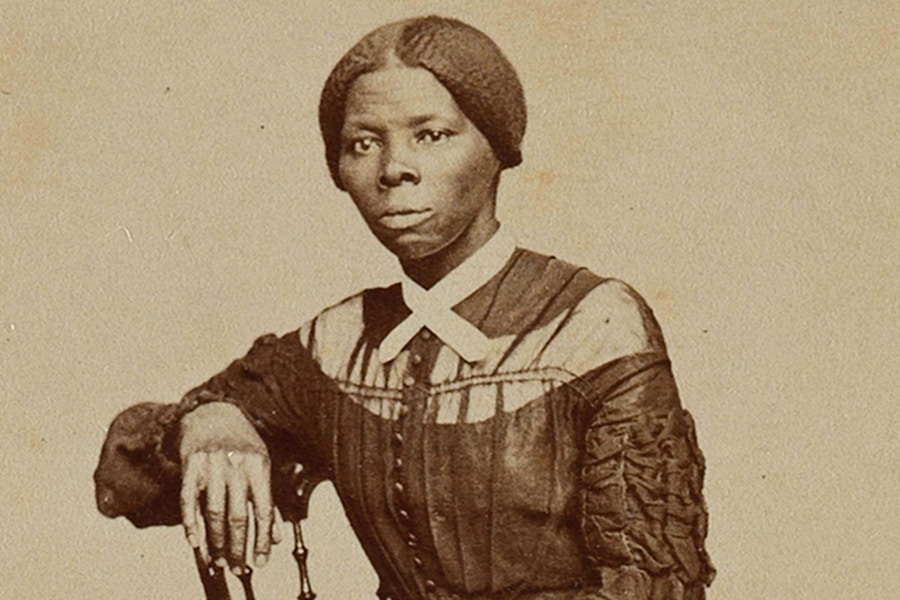Introductory Note:
May this handful of thumbnail character sketches from an appendix in Streams of Living Water invite you to explore more deeply each movement and figure.
Renovaré Team
 Excerpt from Streams of Living Water
Excerpt from Streams of Living Water
Abolition Movement (18th century to the present)
The Quaker example of freeing slaves and their campaign to ban slavery awakened the conscience of two key figures: William Wilberforce in England and William Lloyd Garrison in the United States. With other reformers Wilberforce, a member of Parliament, worked unstintingly to abolish slavery in the British Empire. It happened in two stages: a bill outlawing the slave trade was passed in 1807, and in 1833 slavery itself was abolished. In the United States Garrison published the antislavery newspaper The Liberator, which brought the issue before a wide audience. He was joined in his antislavery efforts by many others, including Levi Coffin, James Russell Lowell, John Greenleaf Whittier, Wendell Philipps, Lucretia Mott, and freed slaves James Forten, Robert Purvis, Frederick Douglass, and Sojourner Truth. Sadly, it took a Civil War, the Emancipation Proclamation, untold deaths, and the passage of the Thirteenth Amendment to the Constitution to end slavery. Most of the activity to ban slavery during the eighteenth and nineteenth centuries took place in the U.S. and England, but now movements to ban it worldwide are arising.
Truth, Sojourner (or Isabella Van Wagenen) (c. 1797 – 1883)
Isabella Van Wagenen was born from below as a slave in New York (Unites States). In 1843, in her middle years, she was born from above as a child of God. She then took a new name — Sojourner Truth — and hit the road as an itinerant preacher. Highly intelligent, though with no formal education, “Truth had great presence. She was tall, some 5 feet 11 inches, of spare but solid frame. Her voice was low, … and her singing voice was powerfully beautiful. No one ever forgot the power and pathos of Sojourner Truth’s singing, just as her wit and originality of phrasing were also of lasting remembrance. … Truth was first and last an itinerant preacher. From the late 1840s through the late 1870s, she traveled the American land, denouncing slavery and slavers, advocating freedom, women’s rights, woman suffrage, and temperance.”
Tubman, Harriet (Moses) (c. 1820 – 1913)
A generation younger than Sojourner Truth, Harriet Tubman was born a slave in Maryland (United States), married a free man, and escaped and went to Philadelphia via the Underground Railroad in 1849. Having vowed to return and assist other slaves, she went back one year later; over the next ten years she helped over three hundred people gain their freedom. During the Civil War she served as a Union army nurse, scout, and spy, still helping countless slaves escape to freedom via the Underground Railroad. Returning to New York after the war, Tubman raised money for black schools and established a home for needy and elderly blacks. She and Sojourner Truth are America’s most famous nineteenth-century African-American women.
American Civil Rights Movement (20th century to the present)
Passed after the Civil War, the Thirteenth Amendment to the United States Constitution abolished slavery; the Fourteenth Amendment gave African-American men their citizenship; the Fifteenth Amendment prohibited the states from denying any man the right to vote based on race. Though social and political equality was codified, the reality was much different: blacks were denied basic rights by fiat and forced to contend with assigned seating in public places (always at the back or least desirable location), “colored” restrooms and water fountains, exclusion from social clubs and top-level jobs, and (in the South) extra restrictions attached to voting. The contemporary movement toward correcting these injustices started in 1954, when the U.S. Supreme Court ruled in Brown v. Board of Education of Topeka that segregation in public schools was unconstitutional — hence all “separate but equal” and exclusionary practices against women, the disabled, racial groups, and more were open to challenge.
Parks, Rosa (1913−2005)
In 1955 Rosa Parks, sometimes called the mother of the modern civil rights movement, refused to follow the convention of segregated bus-riding. Blacks were expected to pay their fare at the front door of the bus and then exit, entering again through the rear to find a seat. Rosa Parks entered, paid her fare, and then sat down in the front; and she refused to give her seat up to a white man when asked to by the driver. Her action against injustice in Montgomery, Alabama (United States), spurred people of conscience to protest the denial of rights to African-Americans, and it continues to be an example of how one person can inspire positive, lasting change.
King, Martin Luther, Jr. (1929−1968)
When Rosa Parks refused to give up her bus seat to a white man in 1955, her action inspired the African-American population of Montgomery, Alabama (United States), to boycott city buses. Lasting about a year (until segregation on public transportation was ruled unconstitutional by the Supreme Court), the bus boycott spawned the civil rights movement. Martin Luther King, Jr., became that movement’s most visible leader. A Baptist minister from Atlanta, Georgia, he adopted the nonviolent protest approach used by Mahatma Gandhi in gaining India’s freedom from England and led numerous protests before his assassination.
Foster, Richard J.. Streams of Living Water: Celebrating the Great Traditions of Christ (p. 273). HarperCollins. Kindle Edition.
Text First Published September 1998



